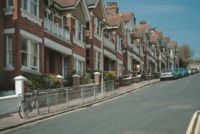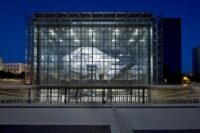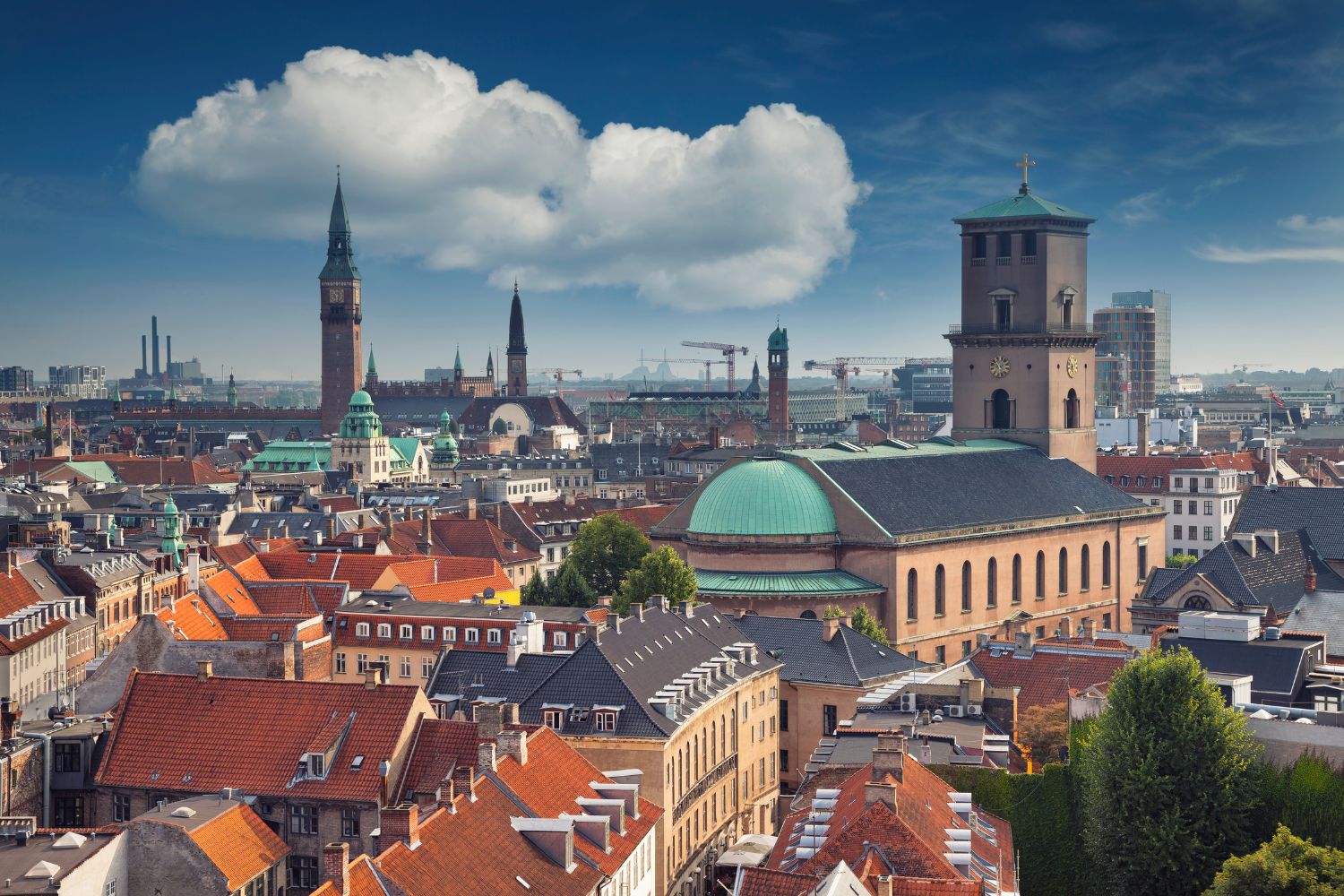- Home
- Articles
- Architectural Portfolio
- Architectral Presentation
- Inspirational Stories
- Architecture News
- Visualization
- BIM Industry
- Facade Design
- Parametric Design
- Career
- Landscape Architecture
- Construction
- Artificial Intelligence
- Sketching
- Design Softwares
- Diagrams
- Writing
- Architectural Tips
- Sustainability
- Courses
- Concept
- Technology
- History & Heritage
- Future of Architecture
- Guides & How-To
- Art & Culture
- Projects
- Interior Design
- Competitions
- Jobs
- Store
- Tools
- More
- Home
- Articles
- Architectural Portfolio
- Architectral Presentation
- Inspirational Stories
- Architecture News
- Visualization
- BIM Industry
- Facade Design
- Parametric Design
- Career
- Landscape Architecture
- Construction
- Artificial Intelligence
- Sketching
- Design Softwares
- Diagrams
- Writing
- Architectural Tips
- Sustainability
- Courses
- Concept
- Technology
- History & Heritage
- Future of Architecture
- Guides & How-To
- Art & Culture
- Projects
- Interior Design
- Competitions
- Jobs
- Store
- Tools
- More
The Urban Flow: Redefining City Movement for a Sustainable Future
Discover how the concept of urban flow is revolutionizing city movement in our latest article. We explore the integration of innovative technologies and community engagement to reshape mobility and accessibility. From smart infrastructure to multimodal transportation, learn how urban flow enhances daily life, promotes sustainability, and strengthens community ties.

Cities are evolving at a rapid pace, and the concept of urban flow is at the forefront of this transformation. As we navigate bustling streets and crowded public spaces, we’re witnessing a shift in how movement is conceptualized and experienced. Urban flow isn’t just about transportation; it’s about creating harmonious interactions between people, infrastructure, and the environment.
By embracing innovative designs and technologies, cities are redefining mobility and accessibility. This movement focuses on enhancing the quality of urban life, encouraging sustainability, and fostering community connections. As we explore the dynamics of urban flow, we’ll uncover how these changes are reshaping our daily experiences and paving the way for smarter, more livable cities. Join us as we delve into the exciting world of urban movement and its impact on our lives.

Table of Contents
ToggleThe Urban Flow Redefining City Movement
Urban flow reshapes how we navigate our cities by integrating mobility, infrastructure, and community engagement. It emphasizes seamless transitions between transportation modes, fostering efficient travel experiences.

Key Components of Urban Flow
- Multimodal Transportation: We incorporate diverse transport options like biking, public transit, and walking to enhance connectivity.
- Smart Infrastructure: We utilize smart technologies, such as traffic management systems and real-time data applications, to optimize urban movement.
- Sustainable Practices: We adopt eco-friendly designs, promoting green spaces and reducing vehicle reliance, which improves air quality and urban aesthetics.
The Role of Technology
Technology plays a pivotal role in shaping urban flow.
- Data Analytics: We analyze transportation patterns to identify congestion points and adapt services accordingly.
- Mobile Applications: We create user-friendly apps that provide real-time information on transportation options, encouraging informed choices.
- Autonomous Vehicles: We explore the potential of automated systems, which can enhance efficiency and traffic safety.
Enhancing Community Engagement
Urban flow relies on community participation.
- Public Feedback: We gather input from residents to identify mobility challenges and co-develop solutions.
- Civic Innovation Labs: We establish collaborative spaces where citizens, urban planners, and tech developers brainstorm ideas for improved urban mobility.
- Cultural Events: We organize local activities that promote walking and cycling, fostering community interaction and awareness about transportation alternatives.
Impact on Daily Life
The integration of urban flow significantly enhances our daily experiences.
- Reduced Commute Times: We experience shorter travel durations due to optimized routes and transportation options.
- Improved Accessibility: Urban flow ensures more accessible cities for all, including individuals with disabilities.
- Enhanced Quality of Life: We benefit from improved public spaces, increased safety, and community cohesion, resulting in more livable environments.
The urban flow concept invites continuous exploration and adaptation, making city movement more efficient, sustainable, and enjoyable.
Key Concepts of Urban Flow
Urban flow encompasses the dynamic interplay between people, infrastructure, and the environment within urban settings. This concept redefines movement, enhancing accessibility and fostering community engagement.

Definition of Urban Flow
Urban flow refers to the seamless movement of people and goods throughout a city, characterized by the integration of various transportation modes, efficient infrastructure, and intelligent systems. This concept emphasizes the need for connectivity and enhances the overall urban mobility experience. By prioritizing fluid transitions between walking, cycling, public transport, and vehicular traffic, urban flow creates a cohesive and accessible urban environment.
Importance in Urban Planning
Urban flow plays a critical role in urban planning by fostering sustainable development and improving quality of life. It encourages the design and implementation of multimodal transportation systems that reduce congestion and environmental impact. Key benefits include:
- Enhanced Mobility: Urban flow promotes alternative transportation options to car-centric models, improving access across neighborhoods.
- Community Engagement: Incorporating public feedback in planning processes fosters inclusive urban spaces catering to diverse needs.
- Sustainable Practices: Urban flow advocates for eco-friendly solutions, such as green spaces and smart infrastructure, contributing to reduced carbon footprints.
By integrating urban flow principles into city planning, we can create smarter, more livable environments that meet the evolving needs of our communities.
Factors Influencing Urban Flow
Urban flow is shaped by various factors that enhance mobility and accessibility in cities. Understanding these factors helps us create more efficient urban environments.

Technology and Innovation
Technology significantly drives urban flow improvements. Data analytics help us identify congestion patterns, allowing city planners to implement targeted solutions. Mobile applications provide real-time transportation information, enabling users to make informed travel choices. Intelligent transportation systems incorporate sensors and AI to optimize traffic flow, reducing delays. Additionally, innovations like autonomous vehicles present new possibilities for safe and efficient travel, freeing up space for pedestrian-friendly infrastructures.
Social Dynamics
Social dynamics play a crucial role in urban flow. Community engagement fosters collaboration between residents and city planners, ensuring that transportation solutions reflect local needs. Public feedback mechanisms, such as surveys and town hall meetings, facilitate communication, enhancing the incorporation of citizen perspectives. Furthermore, cultural events promote active transportation modes like walking and cycling, bringing people together and reinforcing community ties. A vibrant social fabric enhances the overall urban experience, supporting seamless movement across our cities.
Case Studies of Successful Urban Flow Implementations
We can observe successful urban flow implementations in various cities, showcasing innovative strategies and their impacts on mobility and community engagement.

City A: Innovations and Outcomes
City A adopted smart traffic management systems that employ real-time data analytics, significantly reducing congestion by 20%. We also note the integration of multimodal transportation options, such as bike-sharing programs and electric buses. These options encourage more sustainable commuting practices, with a 30% increase in active transportation usage observed in the past year. Community feedback played a vital role, as residents participated in civic innovation labs, shaping transportation planning to better meet local needs. Additionally, the installation of pedestrian-friendly infrastructure contributed to an enhanced urban landscape, promoting walkability and social interaction.
City B: Challenges and Resolutions
City B faced significant challenges during its urban flow transition, particularly with community engagement and resistance to change. Initial implementation of a new transportation network led to a 15% decrease in public transportation ridership, causing concerns among stakeholders. We addressed these issues by establishing clear communication strategies to share the benefits of the proposed changes. City planners organized workshops to involve citizens actively, fostering collaboration and trust. As a result, revised strategies included improved bus routes and increased frequency of service, reversing the decline in ridership by 10% within six months. The city continues to adapt in response to community feedback, illustrating the importance of collaboration in overcoming obstacles to urban flow.
Future Trends in Urban Movement
The future of urban movement hinges on sustainable transportation and smart city developments. We witness a shift towards reducing our carbon footprint and enhancing the efficiency of urban experiences.

Sustainable Transportation Solutions
Sustainable transportation solutions focus on minimizing environmental impact while improving mobility. We can expect the following advancements in this area:
- Electric Vehicles (EVs): EV adoption continues to rise, driven by incentives and infrastructure investments. Cities are expanding charging networks, making eco-friendly options more accessible.
- Biking Infrastructure: Bike-sharing programs and dedicated bike lanes encourage cycling as a primary mode of transportation. Studies show a 30% increase in biking when cities enhance cycling infrastructure.
- Public Transit Innovations: Modern public transit systems incorporate electric buses and light rail, reducing emissions and travel times. Cities are integrating real-time tracking for enhanced user experience.
- Shared Mobility: Rideshare and carshare services complement public transit, offering flexible travel options. These services maintain lower vehicle ownership rates, promoting a shared economy.
- Active Transportation Initiatives: Cities are investing in walkable neighborhoods through better sidewalks and pedestrian zones, increasing access to local amenities.
Smart City Developments
Smart city developments leverage technology to enhance urban living and streamline movement. Key trends include:
- Connected Infrastructure: IoT devices gather data on traffic patterns and environmental conditions, informing urban planning. Real-time adjustments can optimize traffic flow and reduce congestion.
- Autonomous Vehicles: Self-driving car technology is being tested in urban areas, promoting greater safety and efficiency in transportation. Pilot programs in cities indicate significant potential for reduced accidents.
- Data-Driven Decision Making: Cities are employing big data analytics to improve services and solve urban challenges. We see data shaping policy decisions that better reflect community needs and preferences.
- Smart Traffic Management: Advanced systems monitor traffic in real-time, dynamically adjusting signal timings to improve flow. This reduces travel times and emissions.
- Community Engagement Platforms: Digital tools allow residents to provide feedback on city projects. Involvement fosters citizen satisfaction and enhances project relevance.
Implementing these future trends in urban movement promotes sustainability, efficiency, and community connectivity, ultimately enhancing our urban environments.
Conclusion
Urban flow fundamentally transforms how we experience city movement. By prioritizing seamless transitions between various transportation modes, we enhance mobility, connectivity, and sustainability. Our focus on integrating innovative technologies, such as smart infrastructure and data analytics, streamlines urban navigation and improves the quality of life for residents.
Community engagement remains central to these advancements. By establishing public feedback mechanisms and civic innovation labs, we foster collaboration among residents, planners, and stakeholders, ensuring solutions effectively address local needs. Cultural events can also promote active transportation, strengthen community ties, and inspire individuals to contribute to city mobility initiatives.
As we progress, the influence of electric vehicles, enhanced biking infrastructure, and shared mobility options will further shape urban flow. Embracing smart city developments allows us to optimize resources and create more livable environments. This integrated approach to transportation not only reduces congestion but also enhances accessibility, making our cities better places to live and work.
By understanding and implementing the principles of urban flow, we position ourselves to navigate future challenges in city movement. We advocate for sustainable practices and smarter planning, ultimately enriching urban life while meeting the evolving demands of our communities.
- city logistics solutions
- city movement innovation
- city movement technologies
- city traffic management
- eco-friendly city transit
- environmentally friendly transit
- Future of urban mobility
- green transportation options
- public transportation innovation
- smart city transport
- smart urban mobility
- sustainable city planning
- sustainable city transportation
- sustainable urban development
- sustainable urban travel
- urban congestion solutions
- urban flow technology
- urban mobility solutions
- urban transport sustainability
- urban transportation services
Submit your architectural projects
Follow these steps for submission your project. Submission FormLatest Posts
How DeepSeek AI Is Transforming Architecture and Urban Design Workflows
DeepSeek AI represents a new generation of architectural intelligence, shifting artificial intelligence...
Eco-Friendly Floor Coverings: Smart Choices for a Greener Home
Eco-friendly floor coverings made simple: discover sustainable materials, trusted certifications, and room-by-room...
Copenhagen Named the Happiest City in the World in 2025
Copenhagen has been named the happiest city in the world in 2025...
Frank Gehry’s Transformative Ideas in Urban Design
Frank Gehry’s influence extends far beyond expressive architecture; his ideas have reshaped...












Leave a comment